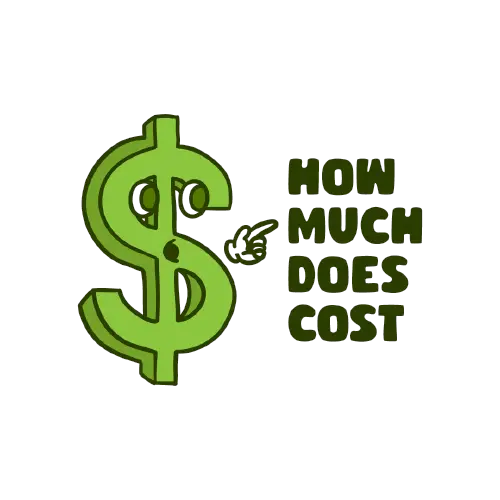Racquetball is considered the hottest racquet sport around, and many clubs are built for this sport. It is also called paddleball and played on a court where the opposing player hits the ball after it has passed the receiving lines.
The racquetball game is based on a squash game, and the only difference is the size of rackets used to hit the ball. This game can be played either indoors or outdoors, between 2 to 4 players at a time.
A racquetball game is not only a fun play, but it is also very beneficial for one’s health. It helps to tone the body’s main muscle groups.
During the match, payers work almost every muscle in their body, including the lower back and the core. It also increases players’ level of stamina and flexibility.
Table of Contents
Cost to build a Racquetball Court
Building a racquetball court is an expensive project that needs heavy funding. Commonly racquetball courts can cost somewhere between $30 and $40 per square foot for a simple court made with a steel frame. But the cost can be different depending on factors as if you want to build a court at home and hire a contractor to do so, so be ready to spend up to $100,000.
The cost of building an indoor racquetball court can be very different from an outdoor court. For example, home courts typically cover two floors and require glass wall panels and particular floors such as maple.
Indoor courts will also need steel bars and roof joints to prevent rotting.
Moreover, when you are using a home-based court, the process may include; clearing the land to set the foundation.
After selecting the foundation, about 800 to 1,000 square feet of concrete is laid to create the floor. After, there is also a need to make a concrete wall.
This all can cost about $100,000.
This cost estimation is without adding the expenses of fencing, painting, or speaker if needed.
Factors affecting the cost
The factors affecting the cost of building a racquetball court includes
Accessories cost
Racquetball court accessories include glass doors, wood, LED or fluorescent lights, Wallyball kits, basketball accessories, and storage boxes.
This all can cost differently at different places. It is always recommended to use all the needed accessories with high-quality materials.
This may add more cost to the actual cost, but it will save future expenses.
Contractor Fees
For the best quality construction of a racquetball court, one must hire a contractor. Always consider hiring a certified and experienced instructor who can guide you and make your racquetball court the best for the best quality work.
However, an experienced contractor will help you maximize your results and keep the overall construction cost reasonable. The fees can be 25 percent of the project cost. But investing money in contractors will save your money from far from mistakes that can happen during a project.
LED lights cost
It would be best if you choose lights that are not too bright and not too distracting. Selecting the best quality light for the court can be expensive, but it can be hassle and maintenance-free. You can also purchase lights for the court that eliminates shadow.
You also have to hire an electrician to install lights that will deal with all the electrical requirements to save you from any mistake.
Land preparing Cost
Preparing the land for construction can add significant expenses. If you are building court on home-based land, you must add concrete to make the straight surface.
And you will also need concrete to create walls of the court. This all will add a heavy amount of money to the actual cost of construction.
Wall Construction cost
Construction of more walls into court will need more building material that will drive higher the overall cost. The same can be said if you will build a higher wall.
Maintenance cost
Maintenance is an essential requirement for the construction of a racquetball court. The things like slab leveling, finish trimming, grills, components, and electrical wiring all require much attention to detail.
Racquetball may seem identical to other racket sports like tennis, but there is a big difference between them.
This sport is only played on a court, which is surrounded by walls.
Things To Consider Before Spending Money On Building a Racquetball Court
However, A regular racquetball court is entirely enclosed and with a front wall. A standard racquetball court usually is 20 feet wide, 20 feet high, and 40 feet long.
The entire surface of the racquetball court is made up of wood. You can construct the court indoor or outdoor, but it should be fully enclosed if you desire to build a standard racquetball court.
Some people also build racquetball courts with some variations that do not meet what a racquetball court should be.
Such variations are often made for the purpose of casual play or entertainment. However, in terms of competition, these minor court variations do not meet the criteria for an official pitch.
Some of the variations of racquetball courts may have sidewalls that do not extend the entire length of the field.
There are also cases where there are only one or two side walls, for example, when the yard is closed in all places except one sidewall.
Because these courts lack one or all sidewalls, they are considered more accessible than a standard racquetball court.
You might be interested to read : Cost To Build a Pickleball Court, Cost To Build a Shuffleboard Court.
Racquetball is played in multiple ways
When this game is played between two players, playing in a one vs. one match, it is known as a racquetball singles match. It is the most common way to play this game.
It is called a racquetball doubles match when it is played between four players, playing in two VS two matches. It is commonly played in both competitive and non-competitive matches.
The game can also be played between three players as 1 VS, 1 VS, 1 V style and is also referred to as three players’ racquetball or cutthroat racquetball. This type of game is not played at competition levels, but it could be a source of great happiness when an odd number of players are available for the game.
Construction of Racquetball Courts
Building a racquetball court is not cheap and needs a lot of work and attention. The construction cost can be six figures maximum.
But depending on factors, the price can be half of this.
To build the racquetball courts that fits the need of tournaments, you can take advice from professionals.
Walls and ceilings of Court
At the very least, racquetball courts require four walls. The one is a front wall where most of the actions take place, and it needs to be 15’0″ high.
Then two sidewalls that must be 15’0″ high, and finally a back wall with 7’0″ height at the very least. Depending on your demands, walls can abe constructed with glass or with bricks or mortar.
Every racquetball court also must have a ceiling with a height of 20′ 2″ from the slab.
Floor surface
A racquetball court’s surface is also significant as many actions take place on the surface. Mostly the racquetball surfaces are made up of hardwood with either a sleeper or plywood subfloor.
The floors are then sealed, finished, and painted with game lines. You can also request the constructor to paint the court for other games also.
The door system
A racquetball court must have doors for entrance. You can also install glass doors in your courts to make them more beautiful and appealing. The glass doors or walls can be fabricated about any size for use throughout the court.
Other accessories
There are many other materials needed for the construction of courts. This may include lighting systems, speakers, and it may also need a prefabricated structure to facilitate the construction. This requires installations, human resources, and person-hours.
Court Marking
There are different lines on the court for different aspects of serve. They emphasize the importance of serving in the game. Identifying, naming, and identifying the purpose of each line ensures consistent understanding among players and ensures safe and fair play. Some important line includes;
Short Line
The short line is on the middle of the court that divides the court into two areas, 20 feet from both back and the front wall.
Service line
The service line is close to the front wall and plays an essential role in the serve. The player serving must be careful to keep both feet behind the line. When both even one feet cross over the service line, then serve will be out.
Service zone
It is the area between the service line and short line and is also called the service box. The serve has to stay in this area until the ball passes the short line.
Service boxes
These boxes are present on either side formed closest to the wall in the service zone. It is usually used in doubles racquetball matches.
Dash line
This is also called the receiving line that outlines the safety zone together with the short line. It is not allowed for the player to cross the receiving line until the ball bounces inside the safety zone or passes the receiving line in the air.

